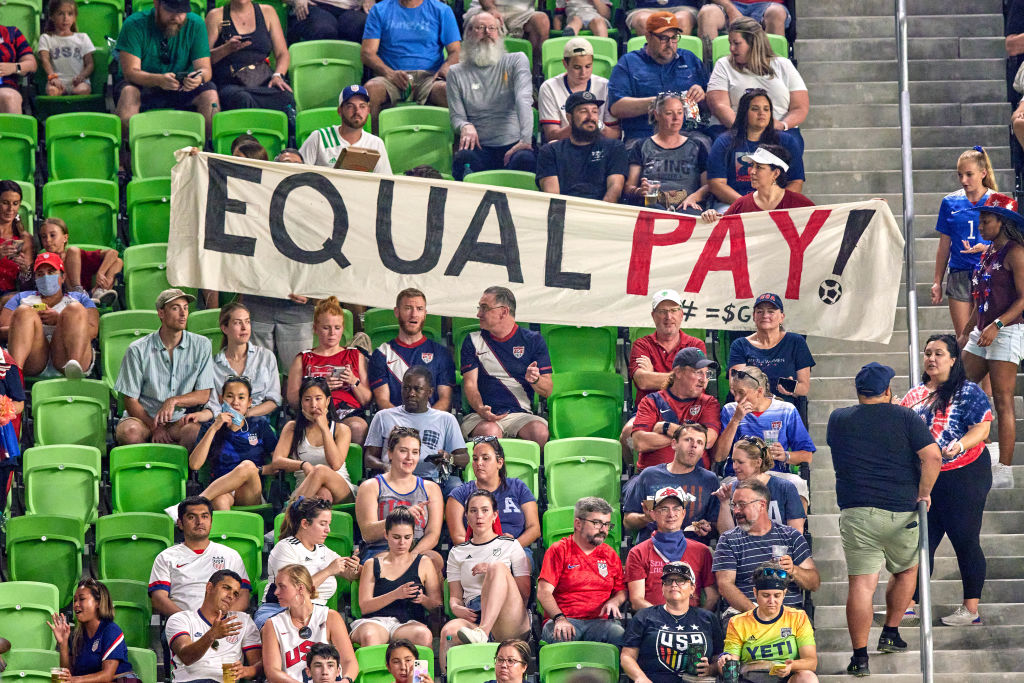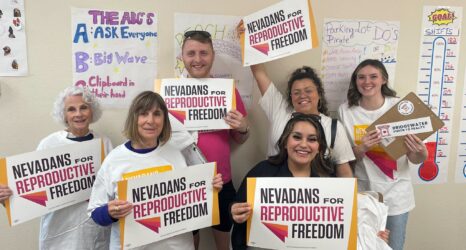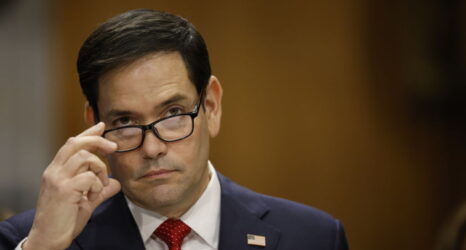A new report releases statistics that might make us hopeful—but there are factors not reflected in these numbers.

A new report out Monday from the Pew Research Center in Washington, D.C., looks at a slice of the gender wage gap not usually highlighted: young women under 30 working full-time year round. The good news? The headline says these women are “out-earning young men in several U.S. cities.” But as we’ve come to expect, the news isn’t as sunny as it seems when you drill down to the details. Turns out “several” means a mere 16 of 250 U.S. metropolitan areas where young women actually out-earn men. Women’s earnings equal those of men in another six.
But hey, 22 Metropolitan Statistical Areas on par or above men’s earnings is a heck of a lot better than none, which has historically been the case. Those 22 range from tiny Wenatchee, Washington (population 118, 252), where young women outdo their male counterparts by 20 percent, to the greater New York area (population 19.2 million) where women best men by 2 percent.
The Census Bureau estimates that the gender earnings gap for full-time, year-round workers ages 15 and older is 82 percent, but that number hides greater disparities by race and ethnicity. So we took a closer look at those 22 places where young women are on par or above men in yearly earnings. More than half (15) are majority white, including the top five. One, Urban Honolulu, is majority Asian/Pacific. Six are majority-minority, meaning white people are less than 50 percent of the population, but the majority is constituted of a mix including Black, Hispanic, Native, Asian and others.
But that doesn’t mean young white women are exactly taking the lion’s share when it comes to closing the gap. Three out of the four cities at the bottom of the barrel (under 70 percent of men’s earnings) for young women under 30 are majority white; one is majority-minority. And in the next group of 14 locations with the lowest comparative earnings (70-79 percent of men’s wages), all are majority white.
Black women (63.1 percent of men’s pay nationally) fare better when they live in majority Black cities. The two with the largest Black majorities—Jackson, Mississippi and Detroit—posted far above average numbers for young women’s earnings as compared to young men’s (90 and 89 percent respectively).
Similarly, Hispanic/Latina women (58.4 percent of men’s pay nationally) posted lower than average gaps in pay between younger women and men in cities with the largest Hispanic/Latino majorities. Young women in Miami are closest to parity at 99 percent of men’s pay, and in San Antonio they come in at 93 percent. Those in the Texas cities of Laredo and El Paso were at 84 and 88 percent respectively compared to men’s earnings.
It would be easy to conclude that the trends for young women’s earnings mean the gender pay gap is not only narrowing, but it will be gone in a few years as they continue to gain experience.
Not so fast.
The really big whammy for the young women under 30 studied by Pew is going to hit just around the corner. Harvard economist Claudia Goldin has found that the gender wage gap in America is the largest for women in their 30s—in other words, their prime childbearing years.
The aptly named “motherhood penalty” in wages is very much alive and well in the U.S., and it costs women around $16,000 per year compared to fathers, who pay no penalty at all. In fact, fathers are seen as more reliable workers than non-fathers. And even in workplaces that offer parental leave to men as well as women, fathers take less.
Closing the Gender Pay Gap
So what’s the answer? Number one is fixing our pitiful patchwork of childcare. If the U.S. had more affordable and available childcare many more women could not only stay in the workforce when kids come along, they could take less time off when kids are sick or schools shut down.
We could learn from countries like Iceland and Sweden, which lead the Global North in labor force participation by mothers. It’s pretty easy to see why. Often cited internationally as the gold standard in early learning, Sweden’s Educare is a nationwide network of subsidized preschools that provide childcare and education for the children of all working parents from the age of one.
More than a child-minding service, Educare teachers and support staff are well educated and actively encourage children’s learning and development through a targeted national curriculum. And while preschools in Sweden typically operate between 6:30am and 6:30pm daily, many have now extended hours to accommodate shift workers, including nights and weekends.
Fees are proportional to parental income and capped at a monthly maximum. And children from the age of three receive 525 hours a year free of charge. The system is complemented by paid parental leave arrangements that provide 480 days for each child, insured at 80 percent of parental income.
Let’s hope the U.S. can match some of the gains in other countries before the female workers in the Pew study hit the wall of motherhood and childcare.
Last fall, the U.S. House passed the first national paid family and medical leave bill that would provide four weeks of paid family and medical leave starting in 2024, mostly along party lines. We urge young women voters to remember in November.
Up next:





